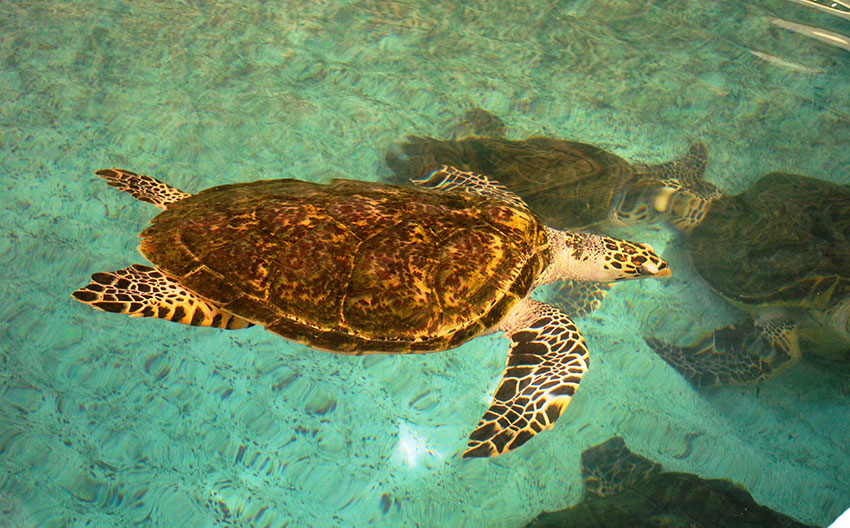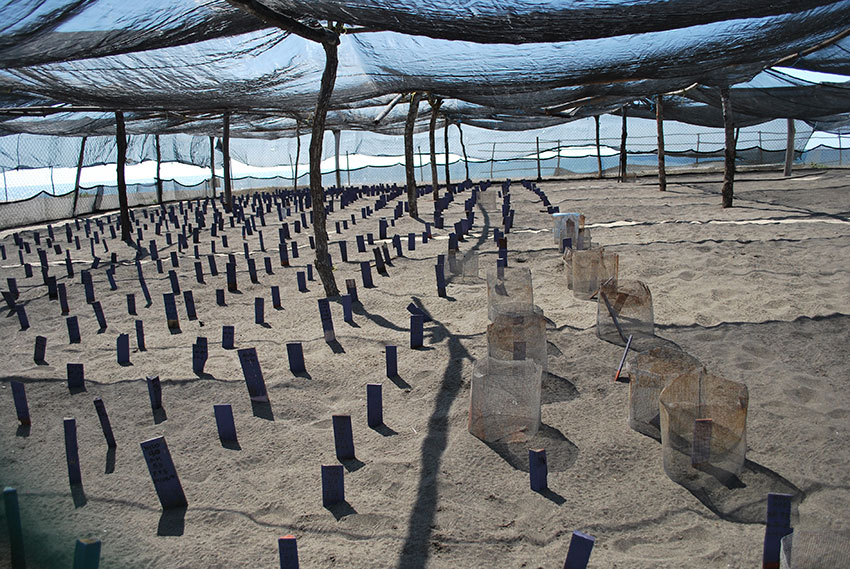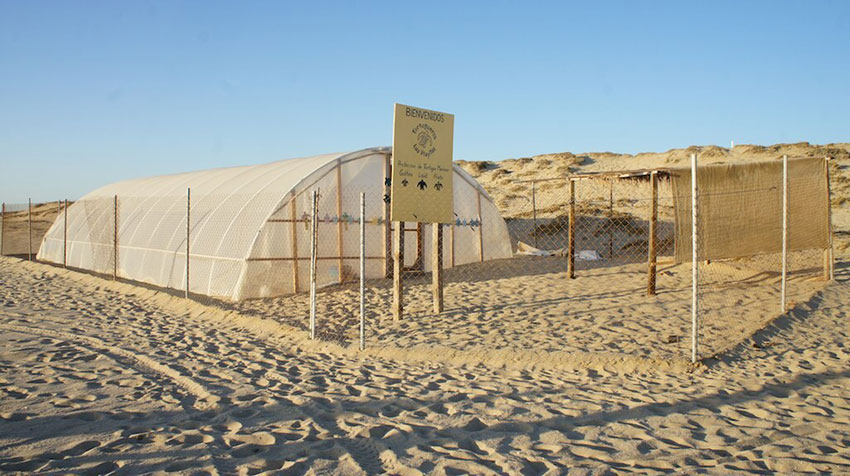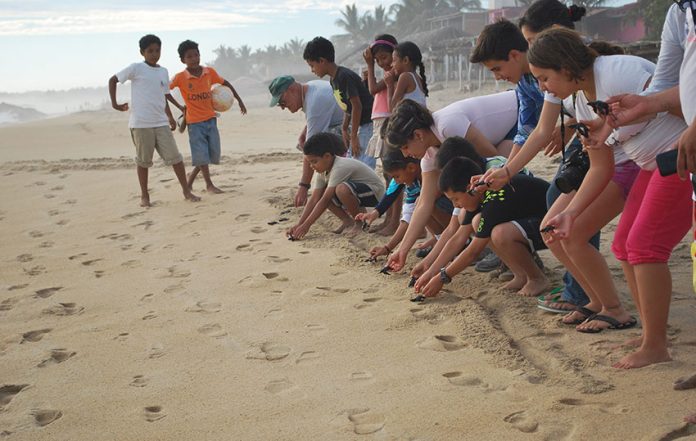There is just something so irresistible about baby turtles. No wonder their release is one of the most popular ecotourism activities in Mexico.
But it is so much more than seeing the hatchling make their way into the water. Mexico is home to nesting sites of seven of the world’s eight sea turtle species – the loggerhead, hawksbill, green sea (Chelonia mydas), olive ridley, Kemp’s ridley, green (Chelonia agassizii) and the leatherback.
Almost all of Mexico’s coastal states have at least one breeding site. In the east, nests are found from the Texas border to the border with Belize. On the west coast, they congregate mostly from Los Cabos/Mazatlán south.
Turtle release areas popular with tourists include Los Cabos, Mazatlan, Costalegre (Jalisco), Puerto Vallarta, Mazunte (Oaxaca), Akumal and Río Lagaros (Yucatán). The season on the east coast runs officially from July to mid-November, and from December to March on the Pacific side.
After mating at sea, female sea turtles always return to the exact beach on which they were born to lay up to 200 eggs at a time. The hatchlings emerge somewhere between 40 and 70 days afterwards, depending on species and environmental conditions.

As popular as it is to protect sea turtles, this was not always the case. Nesting turtles were stalked for their meat, shells, and eggs. Mazunte had a seasonal industry of slaughtering the wild creatures by the thousands. By 1990, all sea turtle species were critically endangered. Under international pressure, the Mexican government decided to shut down the entire trade.
Enforcement of the new laws was necessary, but also providing economic alternatives to those who had depended on sea turtles before. Mexico’s thriving beach tourism provided an obvious alternative, converting the animals from food to tourist attraction. In the case of Mazunte, the old slaughterhouse was destroyed, and the National Mexican Turtle Center built in its place.
The town was named a Pueblo Mágico (Magical Town), a tourism program supported by the federal government. But the most successful strategy nationally has been to set up opportunities for tourists to release baby turtles into the sea.
These release programs vary in size and the formality of the procedures. Turtle nesting sites in just about all of Mexico are watched by authorities and/or volunteers for returning females. After eggs are deposited, they are collected and taken to incubation sites. This gives the eggs the best conditions in which to hatch. It also protects the eggs from predators, including human poachers because the eggs are still highly regarded as a “male virility enhancer.”
After the eggs hatch, release days are scheduled, when the babies are taken to the areas in which their eggs were laid. They are placed on the sand and required to walk/crawl the last meters to get to the breaking surf. This is necessary to imprint the location, so they know where to return later. As this is a particularly dangerous time for the turtles, volunteers do their best to keep them safe until they disappear into the surf.
Most hatching sites welcome both locals and tourists to help release baby turtles. Those with the strictest protocols do not allow volunteers past a certain line in the sand. You may pick up the turtles with your hands to place them in their start position, but those hands must be wet and sandy from the beach itself. On the Pacific side, released are usually scheduled at sunset as the light guides the turtles, and there are fewer predators.

In tourist areas such as Puerto Vallarta and the Cancún area, many hotels and tour companies will offer tours of incubation facilities and release events during the season. It has become fairly big business, leading places such as Akumal to bill itself as the “Land of Turtles.” Tulum, Quintana Roo, Puerto Arista, Chiapas, and other places have sea turtle festivals at the height of nesting season.
But, the tourist attention is something of a mixed blessing. The economic benefit means that locals now have a stake in preserving the species on their coasts, but crowds of people may negatively affect nesting. This year has been a record year for the number of turtles hatched in several states. This may be because tourism numbers dropped from Covid-19, and fewer nests were disturbed before collectors got to them.
Despite the attraction of the turtles, not all nesting areas have seen the same benefit. Programs on smaller, lesser-known beaches do not get the funds, public or private, that sites in the more developed areas do. In Puerto Vallarta alone, about 170,000 turtles are released by volunteers yearly. In Mazatlán, one major turtle project is located at and supported by Estrella del Mar, a golf resort and luxury development.
Compare this to efforts in the tiny town of Tecolutla, Veracruz. This beach’s olive ridley and leatherback turtle sites are protected primarily due to the efforts of one man – Fernando Manzano (aka “Papa Tortuga”) who began his work in 1974 when his neighbors thought he was crazy. Over the decades, he has raised awareness and brought up generations of conservationists, but almost all efforts here are still done by volunteers, with no government help.
Because the task at hand is so vast, it is relatively easy to get involved as volunteers. Depending on need in a specific location, you can get involved in almost all aspects of the breeding process. One good place to start looking is through the Sea Turtle Conservancy, an international organization and the oldest of its kind in the world.
A Mexican organization for Baja is Grupo Tortugero de las California. It was founded by two Americans in the 1960s, but today it has fishermen, students, housewives and many others who support its work.

Although numbers have climbed, sea turtles are still endangered. Of 1,000 turtles released, only one makes it back to reproduce. While the trade in sea turtle products has been prohibited now for decades, with the overwhelming majority of Mexicans supporting the ban, poaching is still a problem.
During breeding seasons, newspaper stories appear regularly talking about catching poached products, in particular eggs. The Mexican government also tries to discourage the idea that the eggs somehow have particular health benefits. Lastly, Mexico’s beaches continue to attract development, encroaching on breeding habitat.
Leigh Thelmadatter arrived in Mexico 17 years ago and fell in love with the land and the culture. She publishes a blog called Creative Hands of Mexico and her first book, Mexican Cartonería: Paper, Paste and Fiesta, was published last year. Her culture blog appears weekly on Mexico News Daily.
